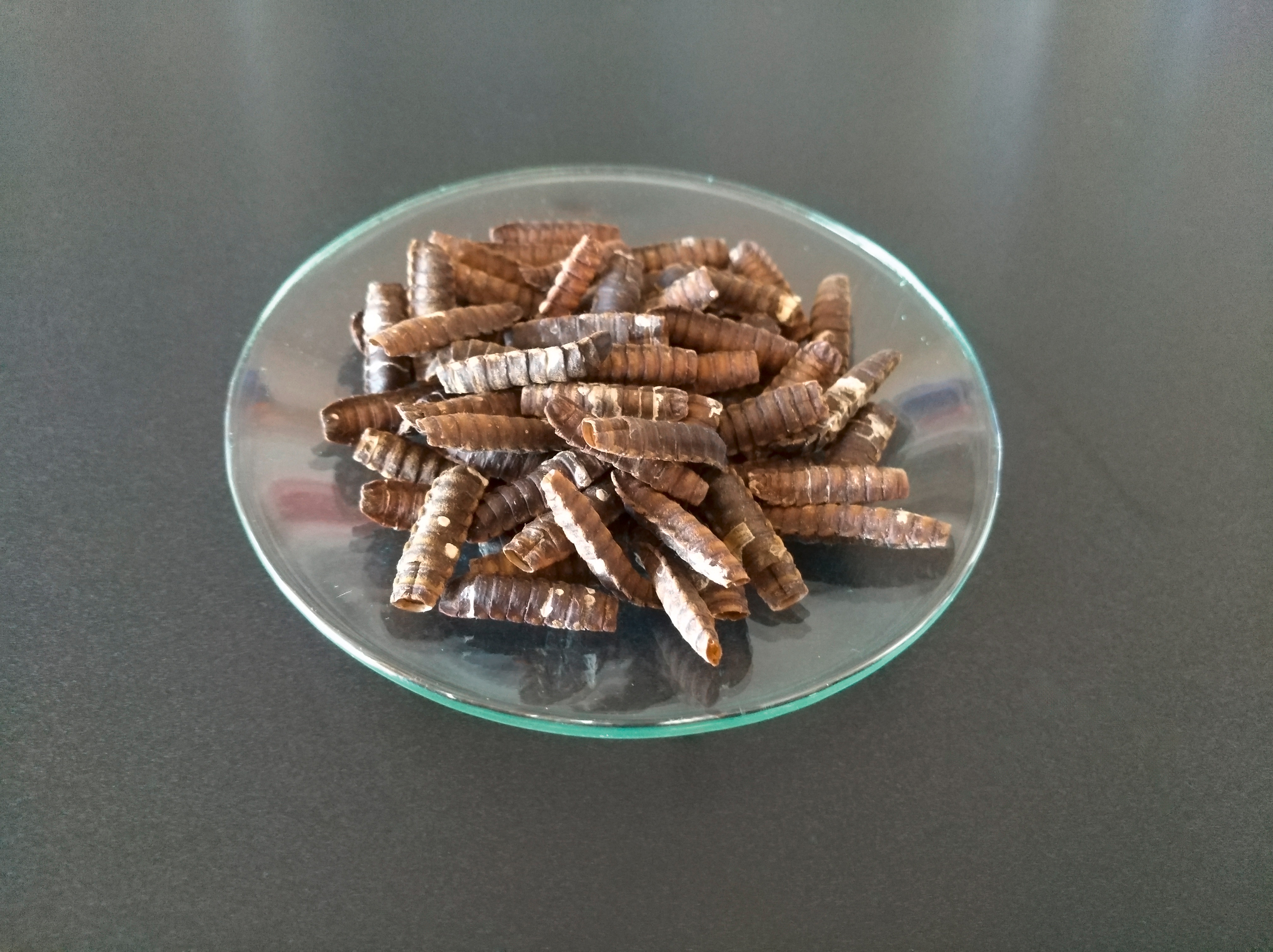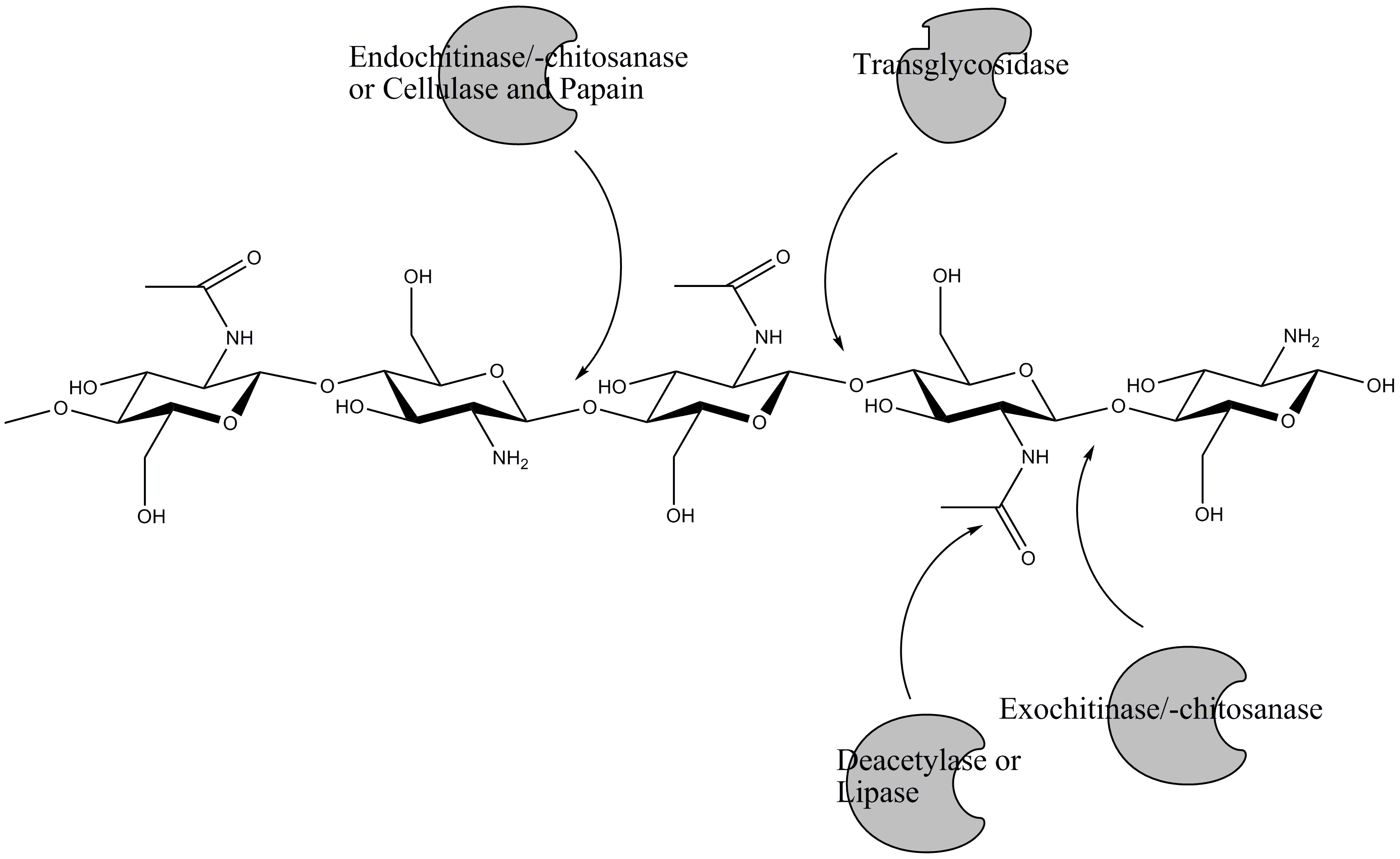Chitin is an ubiquitous natural structural polysaccharide and has great potential as a natural raw material due to its high availability. As a non-soluble polymer, however, the field of application is very limited. For many applications in solution, the smaller, partially acetylated analogue chitosan is required. Chitosan is usually produced from chitin by a chemical process using strong acids and bases.
Enzymatic conversion of chitin from crab shells and insect exoskeletons
Chitinolytic enzymes from microorganisms
The Industrial Biotechnology Group uses biocatalysts to produce chitosan, chitooligomers or N-acetylglucosamine from chitin. The chitinolytic enzymes originate from microorganisms that were specifically screened in chitin-rich habitats. In addition to individual chitinases, non-chitinolytic enzymes (lipases, proteases,...) or enzyme cocktails can also be used simultaneously.
Integration in scalable process engineering processes
In order to use the enzymes as efficiently as possible, activity and stability tests are carried out at different pH values and temperatures. To optimize the biological component, the enzymatic activity is embedded in a controllable and scalable process engineering process. For example, by using immobilisates, product inhibition, which is not unusual for chitinolytic enzymes, can be avoided. The biocatalyst can also be used in several cycles. A decisive requirement is the possibility of being able to apply the process later on a pilot plant and pilot scale. Process engineering investigations are also carried out in order to transfer the process to larger scales. The "Industrial Biotechnology" working group develops scale-up using dimensionless key figures, so that kinetics and yields of enzymatic or microbial processes can be transferred 1:1 to the next larger scale.
Purification and modification
In addition to suitable purification strategies, we offer the development of a biocatalytic process for the modification and hydrolysis of natural substances. The process to be developed can be specifically designed for use in a later commercial, large-scale process. If required, commercially available or specially isolated microorganisms or enzymes can be used. Our research group has the necessary know-how to screen for specific microorganisms and to identify the enzymes relevant for a specific reaction.
Range of services
- Screening and recombinant expression of chitinolytic enzymes such as chitinases or chitin deacetylases
- Investigation of new chitin sources for the synthesis of chitosan, N-acetyl-glucosamine and glucosamine
- Process development and scale-up
Presentation "Insect waste makes textile processing more sustainable"
Presentation held at the 3rd Bioeconomy Congress on September 21, 2020 in the session: Innovative fibers and technical textiles derived from biomass.

Privacy warning
With the click on the play button an external video from www.youtube.com is loaded and started. Your data is possible transferred and stored to third party. Do not start the video if you disagree. Find more about the youtube privacy statement under the following link: https://policies.google.com/privacyPublications
Vainshtein, Y., Werner, N., Kirstahler, P., Glanz, K., Grumaz, C., Hahn, T., Zibek, S., Sohn, K. 2020. Draft Genome Sequence of Andreprevotia sp. Strain IGB-42, a Chitinolytic Bacterium Isolated from a Soil Sample of an Anthill in Stuttgart, Germany. in: Microbiology Resource Announcements, Vol. 9, pp. e01454-19. DOI: 10.1128/mra.01454-19
 Fraunhofer Institute for Interfacial Engineering and Biotechnology IGB
Fraunhofer Institute for Interfacial Engineering and Biotechnology IGB
